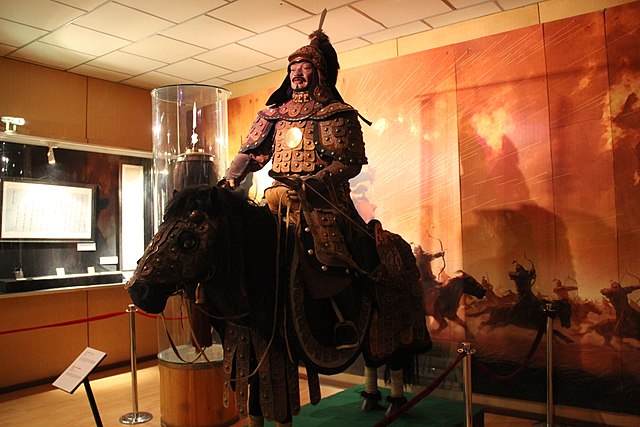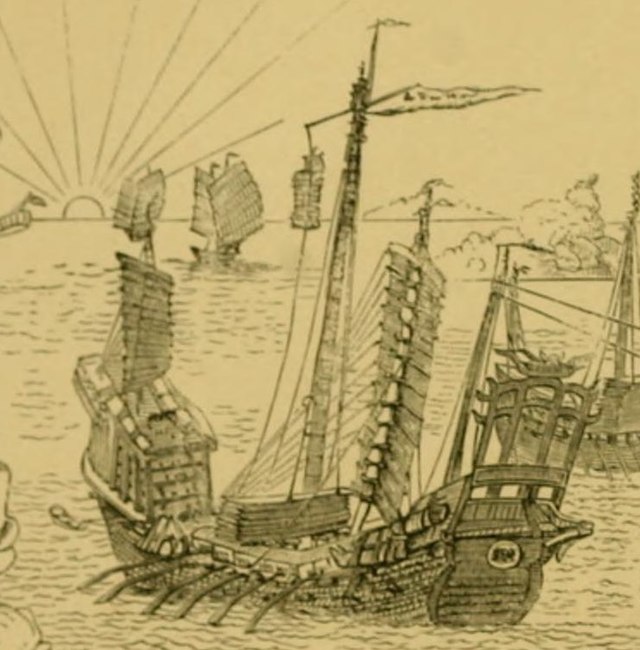Mongol Empire Timeline
The Mongol Empire was one of the largest and most influential empires in history. Lasting from 1206 to 1368, it spanned from Eastern Europe across Asia. Under the leadership of Genghis Khan and his successors, the nomadic Mongol tribes united to conquer major civilizations and established an empire that enabled trade and cultural exchange.

Rise of the Mongols (1206-1227)
The Mongol tribes inhabited the steppes of central Asia and lived as nomadic herders. They frequently fought with each other until the emergence of a unifier.
-
1206 - Temujin was proclaimed “Genghis Khan” (Universal Ruler) and united the Mongol tribes into a powerful confederation. This marked the founding of the Mongol Empire.
-
1211 - Genghis Khan launched invasions into Northern China against the Jin dynasty. This expanded Mongol territory and influence in Asia.
-
1219-1221 - The Mongols conquered the Khwarezm Empire which covered modern-day Iran, Afghanistan and Central Asia. This removed a major power from the region.
-
1227 - Genghis Khan died. By this time, the Mongol Empire stretched from the Caspian Sea to the Sea of Japan. Leadership was passed onto his son, Ogedei.
The early conquests under Genghis Khan saw the use of skilled Mongol cavalry and ruthless military tactics. This allowed the nomadic people to build an empire across Asia rapidly.

Conquest of Asia and Eastern Europe (1227-1241)
Under Ogedei Khan, the successor of Genghis Khan, the Mongols focused their conquests westward. They invaded Korea, China and Eastern Europe with great ferocity.
-
1231 - Ogedei Khan launched a full-scale invasion into Korea during the Goryeo dynasty. Korea was devastated and eventually submitted as a vassal state.
-
1235 - After subduing Korea, the Mongols renewed attacks on China. By 1279, they had extinguished the Jin dynasty and conquered all of China under the newly established Yuan dynasty.
-
1236-1241 - The Mongols attacked the Russian principalities and the kingdom of Hungary. Though unable to consolidate their rule, they left major devastation in Eastern Europe.
The vast distances covered in these invasions were enabled by an extensive pony express-style relay system created by the Mongols. This allowed for secure and rapid communication across the empire.

Mongol Ascendency (1241-1260)
With Ogedei’s death, his son Guyuk took over before dying soon after. This led to the brief rule of Mongke Khan, who further expanded Mongol rule in Asia.
-
1246 - Guyuk Khan died soon after taking power. The kurultai council elected Mongke Khan as the new great khan.
-
1251 - Under Mongke, the Mongols destroyed the Abbasid Caliphate based in Baghdad, bringing an end to the powerful Islamic empire.
-
1258 - The Mongols captured and sacked Baghdad, killing tens of thousands. This was the end of 500 years of Abbasid rule.
-
1260 - Möngke Khan died during his invasion into Sichuan province in China. This forced the Mongols to retreat back to Mongolia to elect a new Khan.
At its peak extent under Mongke Khan, the Mongol Empire covered all of China, Central Asia, Persia, Korea, and extended into Eastern Europe.
Fragmentation of the Empire(1260-1368)
After 1260, the Mongol Empire become divided and faced internal disunity. It eventually fragmented into 4 main khanates before being overrun.
-
1260 - Disagreements after the death of Mongke Khan resulted in 4 khans all claiming power, dividing up the empire.
-
1279 - The Yuan dynasty conquered the Song dynasty and unified China under Kublai Khan, the grandson of Genghis Khan.
-
1368 - The fall of the Yuan dynasty in China with the beginning of the Ming dynasty. This marked the end of the Mongol Empire in China.
-
1480 - The fall of the Khanate in Mongolia. This was one of the last ruling descendant states established by Genghis Khan.
Over 110 years, the unified Mongol Empire under Genghis and Ogedei built the largest land empire in history. Internal strife and resistance from conquered groups eventually broke the empire into pieces across Asia and Eastern Europe.

Timeline Summary
- 1206 - Genghis Khan unites Mongol tribes
- 1211 - Invasion of Northern China
- 1219 - Conquest of Central Asia
- 1227 - Death of Genghis Khan
- 1231 - Invasion of Korea
- 1235 - Renewed invasion of China
- 1236 - Attacks on Eastern Europe
- 1241 - Death of Ogedei Khan
- 1258 - Destruction of Baghdad and Abbasid Caliphate
- 1260 - Death of Mongke Khan, fragmentation of empire
- 1279 - Yuan dynasty conquers China
- 1368 - Fall of Yuan dynasty in China
- 1480 - Fall of Mongols in Mongolia
Impact and Legacy
The Mongol Empire connected the major civilizations of Europe and Asia through trade and infrastructure. They enabled significant cultural exchange and prosperity before succumbing to internal fracturing of the unified empire.
- Spread Asian technology like printing, gunpowder, and the compass to Europe
- Established the famous Silk Road trading network
- Devastated major Islamic and Chinese cities during their invasions
- Caused an estimated 40 million deaths through brutal conquests
- United all major ethnic groups in China under the Yuan dynasty
- Did not impose their culture and languages on conquered people
- Allowed religious freedom for conquered subjects
The Mongol Empire left a conflicting legacy of both brutality from their rapid expansion, and increased trade and technology advancements after establishing their rule. The Mongol conquests shaped Asia and Europe indelibly through the unification of different cultures and destruction of past dynasties.
Conclusion
In just over 100 years, the Mongol tribes under Genghis Khan and his successors rapidly built the largest contiguous land empire in history. At their peak, they conquered China and the Islamic Empire, leaving devastation but also increasing cultural exchange and prosperity across Asia and into Europe after their conquests. Internal power struggles eventually fragmented the empire into four main regions. The Mongol Empire showed the astonished world at the time the military might and organizational prowess of the once disjointed nomadic Mongol tribes from the steppes of Central Asia. Their enduring influence and legacy is still visible today through the lingering cultural imprints and diffusion of technologies across Eastern Europe and Asia.
Frequently Asked Questions
Who was the first leader of the Mongol Empire?
The first leader and founder of the unified Mongol Empire was Genghis Khan, originally known as Temujin. He united the nomadic Mongol tribes in 1206.
What was the religious tolerance policy of the Mongol Empire?
The Mongol Empire allowed religious freedom for conquered subjects and did not impose their own religious beliefs over people in the empire. However, they devastated major Islamic cities like Baghdad during conquests.
How long did the Mongol Empire last?
At its unified peak, the Mongol Empire lasted just over 100 years. It was founded by Genghis Khan uniting multiple tribes in 1206. The unified empire ended around 1260 with the death of Mongke Khan and subsequent fracturing of the realm.
Which modern-day countries were part of the Mongol Empire?
At its peak extent, The Mongol Empire covered modern day Mongolia, China, Iran, Iraq, Afghanistan, Kazakhstan, Kyrgyzstan, Tajikistan, Turkmenistan, Armenia, Azerbaijan, Georgia, Turkey, North Korea, Pakistan and Eastern Europe including Ukraine and Russia.
What eventually led to the collapse and fragmentation of the Mongol Empire?
Several factors including disputes over succession, overexpansion, native uprisings in conquered regions, and difficulty ruling a large empire ultimately caused the unified Mongol Empire to break into pieces about 100 years after Genghis Khan founded it.
Sources
Britannica, T. Editors of Encyclopedia (2020, July 10). Mongol empire. Encyclopedia Britannica. https://www.britannica.com/topic/Mongol
Department of Asian Art. “Timeline of Art History.” In Heilbrunn Timeline of Art History. New York: The Metropolitan Museum of Art, 2000–. https://www.metmuseum.org/exhibitions/crossroads
May, T. (2012). The Mongol Empire: A Historical Encyclopedia [2 volumes]: A Historical Encyclopedia. ABC-CLIO.
Morgan, D. (2020, March 6). Mongol empire. Encyclopedia Britannica. https://www.britannica.com/topic/Mongol
Weatherford, J. M. (2010). The secret history of the Mongol queens: How the daughters of Genghis Khan rescued his empire. Crown Publishers.